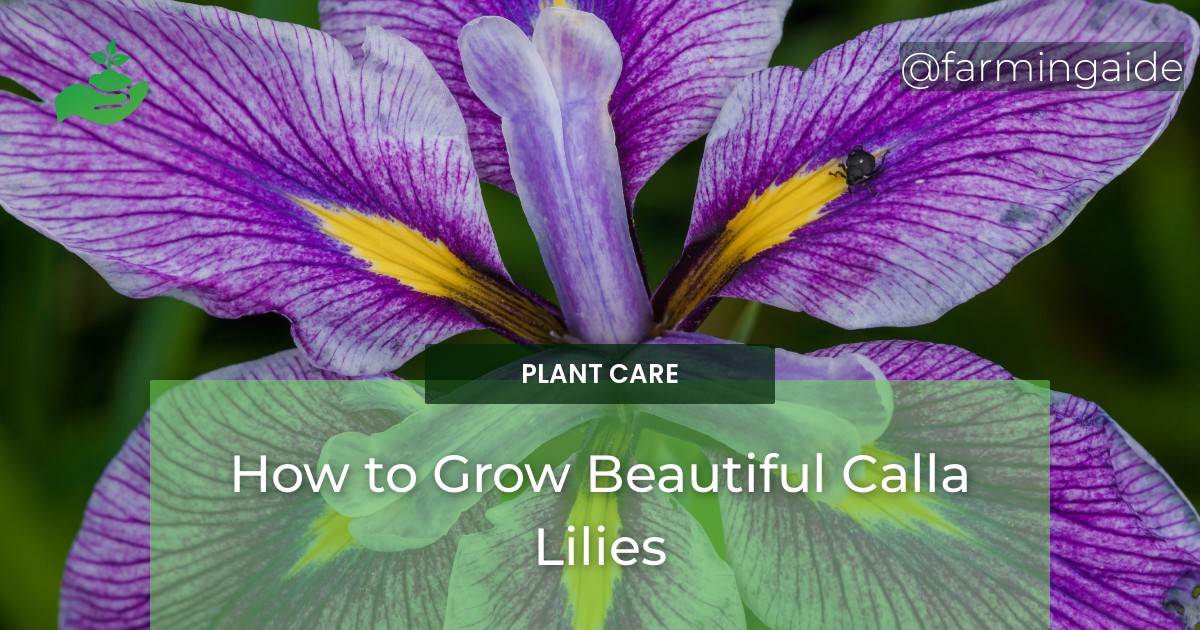If you’re looking to add a touch of elegance and beauty to your garden, look no further than calla lilies. These stunning, trumpet-shaped flowers are not only visually appealing, but they also come in a variety of colors, making them a versatile addition to any garden. However, to truly grow beautiful calla lilies, there are some important tips and tricks to keep in mind. In this comprehensive guide, we will cover everything you need to know about growing calla lilies, from planting to care and maintenance. By the end of this article, you’ll be equipped with all the knowledge you need to cultivate these gorgeous flowers in your own garden.
Introduction to Calla Lilies
Calla lilies, also known as Zantedeschia aethiopica, are native to South Africa but are now grown all over the world. These perennial plants are known for their large, showy flowers that come in shades of white, pink, yellow, and purple. They are commonly used in bouquets and as cut flowers, but they also make stunning additions to gardens and landscapes. Calla lilies are relatively easy to grow and require minimal care, making them an ideal choice for both novice and experienced gardeners.
Planting Calla Lilies
When it comes to planting calla lilies, location is key. These plants thrive in partial shade, so choose a spot in your garden that receives morning sun and afternoon shade. They also prefer moist, well-drained soil that is rich in organic matter. If your soil is heavy and clay-like, consider amending it with compost or peat moss to improve drainage.
Calla lilies can be planted in the spring or fall, but for best results, wait until the soil has warmed up to at least 60°F. Dig a hole that is about 3 inches deep, and place the bulb in the hole with the pointed end facing up. Cover the bulb with soil and water thoroughly. If you are planting multiple bulbs, space them at least 12 inches apart to allow for proper growth and air circulation.
Care and Maintenance of Calla Lilies
Once your calla lilies are planted, it’s important to provide them with regular care and maintenance to ensure healthy growth and beautiful blooms. Here are some key tips:
- Water: Calla lilies need consistent moisture, but they don’t like to sit in soggy soil. Water them deeply once a week, and make sure the soil is moist but not waterlogged.
- Fertilizer: Use a balanced fertilizer once a month during the growing season to promote healthy growth and blooming.
- Deadheading: To encourage continuous blooming, remove spent flowers by snipping them off at the base of the stem.
- Overwintering: Calla lilies are not cold-hardy, so if you live in a colder climate, you will need to dig up the bulbs in the fall and store them in a cool, dry place until spring.
Troubleshooting Common Issues
While calla lilies are generally easy to grow, they can sometimes face certain issues that may affect their growth and blooming. Here are some common problems and how to address them:
- Yellowing leaves: This could be a sign of overwatering or too much direct sunlight. Adjust your watering and move the plant to a shadier spot.
- Pests: Aphids and spider mites can be a problem for calla lilies. Use an insecticidal soap or neem oil to get rid of these pests.
- Rotting bulbs: If the bulbs are rotting, this could be a sign of overwatering. Make sure the soil is well-drained and reduce watering.
What Type of Soil is Best for Growing Beautiful Calla Lilies?
The importance of soil for calla lily cannot be overstated. These stunning flowers thrive in well-draining, nutrient-rich soil. A mix of loamy and sandy soil with added organic matter is ideal for promoting healthy root growth and vibrant blooms. Proper soil composition is essential for the successful cultivation of beautiful calla lilies.
Conclusion
Growing calla lilies may seem intimidating at first, but with the right knowledge and care, you can easily cultivate these stunning flowers in your own garden. By following the tips and tricks outlined in this comprehensive guide, you will be able to enjoy the beauty of calla lilies in your own backyard. Remember to choose a suitable location, provide regular care and maintenance, and address any issues that may arise. With a little bit of effort, you’ll be rewarded with beautiful and vibrant calla lilies year after year.


